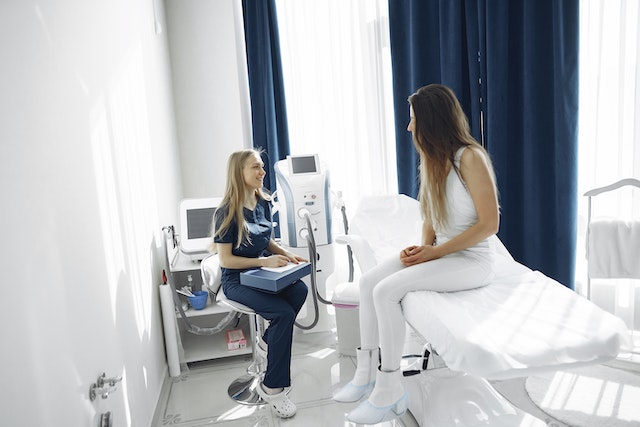In recent years, Robotic Process Automation (RPA) has emerged as a revolutionary technology in various sectors, significantly impacting the healthcare industry. The potential of RPA to automate repetitive and time-consuming tasks has unlocked a myriad of opportunities for healthcare providers to enhance operational efficiency, improve patient satisfaction, and ensure the delivery of high-quality care. By automating administrative processes, data management, and patient engagement tasks, RPA allows healthcare professionals to redirect their focus toward what matters most – providing personalized and effective patient care.
Moreover, the introduction of RPA in healthcare is not only a step towards optimizing internal processes but also a significant leap towards a data-driven, compliant, and patient-centric healthcare model. The implementation of RPA in areas like pharmacy operations, telehealth services, revenue cycle management, and others can dramatically reduce the administrative burden on healthcare staff, minimize errors, and significantly improve the timeliness and quality of service delivery. This article explores the multifaceted applications of RPA in healthcare and underscores how embracing this technology can be a game-changer in the quest for improved healthcare service delivery.
Table of Contents
Top Ways You Can Use Robotic Process Automation in Healthcare
1. Streamlining Administrative Tasks
Robotic Process Automation can significantly streamline administrative tasks within healthcare organizations. RPA bots can handle appointment scheduling, billing, payroll, and claims processing, reducing the workload on human staff. They can work 24/7, ensuring a seamless flow of operations, thereby freeing up the healthcare staff to focus more on patient care than on administrative tasks. Additionally, errors inherent to manual processes are drastically reduced, which in turn enhances operational efficiency and ensures a smoother patient experience.
Also read: WAYS TECHNOLOGY MAKES US LAZY
2. Enhancing Patient Engagement
With RPA, healthcare providers can automate repetitive tasks like sending appointment reminders, notifications, and follow-up communications to patients. These automated communications ensure that patients are well-informed and engaged in their care process. Furthermore, healthcare providers can tailor communication-based on individual patient preferences and needs, thus significantly improving the patient experience and adherence to care plans.
3. Data Management and Analytics
Effective data management is crucial for informed decision-making in healthcare. RPA can automate the data collection, processing, and analysis, turning a plethora of data into actionable insights. This not only aids in real-time decision-making but also helps in predictive analytics which is crucial for proactive care and resource allocation. By reducing the manual effort and time spent on data management, healthcare providers can ensure accurate and timely data analytics.
Also read: Strategies and Best Practices in Security Management
4. Regulatory Compliance and Reporting
Healthcare is a heavily regulated industry that requires strict adherence to various laws and regulations. RPA can be used to automate compliance monitoring and reporting, thereby ensuring that the healthcare facility remains compliant with all necessary legal and regulatory requirements. The automation of these processes not only significantly reduces the risk of compliance violations but also lowers the operational costs associated with manual compliance management.
5. Supply Chain Management
Efficient supply chain management is crucial to ensure that healthcare facilities have the necessary supplies and medications at the right time. RPA can automate inventory monitoring, ordering, and management, thereby ensuring that the supplies are adequately stocked. Furthermore, it can provide real-time insights into the supply chain, allowing for better planning and resource allocation. By optimizing the supply chain, healthcare organizations can ensure timely delivery of care and reduce operational costs.
6. Clinical Documentation
Clinical documentation is fundamental for ensuring accurate and high-quality patient care. However, the process can be time-consuming and prone to errors when done manually. RPA can automate the documentation process, ensuring that all patient information is accurately captured and stored. By reducing the time spent on documentation, healthcare professionals can focus more on providing direct patient care, thereby improving the overall quality of care.
7. Pharmacy Operations
The accuracy and efficiency of pharmacy operations are crucial for patient safety and satisfaction. RPA can significantly enhance pharmacy operations by automating prescription processing, medication dispensing, and inventory management. For instance, RPA can handle prescription refill requests, check for medication interactions, and ensure accurate dispensing of medications, reducing the chances of human error. Moreover, RPA can track medication inventory levels in real-time, automatically reorder supplies, and ensure compliance with drug storage regulations. By optimizing pharmacy operations, healthcare facilities can ensure that patients receive the right medication at the right time, thereby improving patient outcomes and satisfaction.
Also read: Ways Technology Makes Us Smarter
8. Remote Monitoring and Telehealth Services
With the rise in remote monitoring and telehealth services, especially post the COVID-19 pandemic, RPA can play a vital role in managing these digital health services. RPA bots can automate the monitoring of patient data from remote devices, alerting healthcare providers of any anomalies or critical situations. Furthermore, RPA can streamline the scheduling and management of telehealth appointments, ensuring that healthcare providers and patients have a smooth and efficient telehealth experience. By automating various aspects of remote monitoring and telehealth services, healthcare organizations can provide timely and convenient care to patients, irrespective of their geographical location.
9. Laboratory and Diagnostic Services
Accurate and timely diagnostics are essential for effective patient care. RPA can automate various processes within laboratory and diagnostic services, such as data entry, sample tracking, and result reporting. This not only accelerates the turnaround time for diagnostic results but also reduces the likelihood of errors associated with manual processes. By optimizing laboratory and diagnostic operations through RPA, healthcare providers can ensure that patients receive accurate and timely diagnostics, which is crucial for informed decision-making and effective treatment planning.
Also read: Advantages and Disadvantages of Medical Robots : Benefits and Drawbacks Explored
10. Revenue Cycle Management
The complex process of revenue cycle management (RCM) involves multiple steps, from patient registration and insurance verification to billing and collections. RPA can significantly streamline RCM processes by automating data entry, claims submission, and payment processing. By ensuring accurate and timely billing, RPA helps in improving cash flow and reducing the administrative burden on healthcare staff. Moreover, RPA can provide analytics and insights into the revenue cycle, helping healthcare organizations to identify areas of improvement and optimize their revenue management strategies.
11. Fraud Detection and Prevention
Healthcare fraud significantly impacts the financial stability of healthcare institutions and can also adversely affect patient care. RPA can play a vital role in detecting and preventing fraud by automating the monitoring and analysis of financial transactions and claims. By establishing a set of rules and identifiers, RPA bots can flag unusual or suspicious activities for further investigation, thus providing an initial line of defense against fraudulent actions. Furthermore, by automating routine checks and monitoring, healthcare organizations can significantly reduce the risk of internal and external fraud, ensuring compliance and safeguarding resources.
12. Quality Control and Assurance
Ensuring the highest level of quality in patient care and administrative operations is crucial in the healthcare sector. RPA can automate quality control processes, such as audit trails, performance monitoring, and compliance checks. This automation helps in real-time monitoring and reporting of quality metrics, enabling healthcare providers to maintain and improve the standards of care. Moreover, the insights gained from automated quality control processes can be instrumental in identifying areas of improvement and ensuring adherence to industry best practices and regulatory standards.
Also read: Quantum Computing and Humanitarian Digital Ethics: Opportunities and Challenges
13. Real-time Response to Emergencies
In emergency situations, timely response is critical. RPA can help in automating the monitoring of emergency alerts and ensuring that the appropriate personnel are informed in real-time. Furthermore, RPA can automate the mobilization of resources, ensuring that all necessary equipment and personnel are available to deal with emergencies as they arise. By speeding up the response time in critical situations, RPA can significantly contribute to improving patient outcomes in emergencies.
Conclusion
Robotic Process Automation (RPA) has showcased the future of healthcare, laying a strong foundation for a seamless, efficient, and patient-centered model of care. The various avenues for employing RPA in healthcare, from streamlining administrative chores to optimizing clinical trials, underline the technology’s immense potential. RPA not only propels operational efficiency but significantly enhances the quality of patient care, by freeing healthcare professionals to focus more on their primary goal – providing excellent patient care. Moreover, it plays a vital role in ensuring compliance with regulatory standards, which is pivotal in today’s heavily regulated healthcare environment. The evolution of RPA is an invitation for healthcare organizations to adapt, innovate, and elevate the standards of healthcare delivery, thus contributing to better health outcomes and improved patient satisfaction. By harnessing the power of RPA, healthcare institutions are better positioned to navigate the challenges of the modern healthcare landscape, creating a conducive environment for both patient and healthcare provider success.

